BLW Food Size: Why Do Early Eaters Need Big Pieces of Food? with @msdawnslp Dawn Winkelmann, MS, CCC-SLP
- Why do you cut pieces of food bigger for baby-led weaning?
- What happens if you cut foods too small and why this increases choking risk
- How and when to move your baby from bigger pieces of food to smaller pieces?
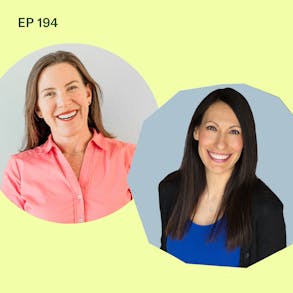
LISTEN TO THIS EPISODE
Episode Description
What size do you cut food for baby-led weaning? When is it safe to cut foods smaller for babies? In this episode BLW expert Dawn Winkelmann, MS, CCC-SLP is teaching why we make BLW foods bigger at first and how you can help your baby succeed in self-feeding by cutting foods the right size early on in self-feeding.

Links from this Episode
- Baby-Led Weaning with Katie Ferraro program with the 100 First Foods™ Daily Meal Plan, join here: https://babyledweaning.co/program
- Baby-Led Weaning for Beginners free online workshop with 100 First Foods™ list to all attendees, register here: https://babyledweaning.co/baby-led-weaning-for-beginners

Latest Episodes
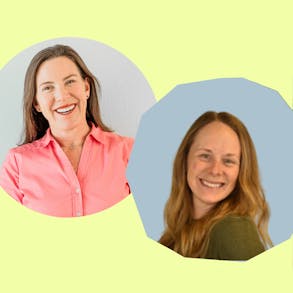
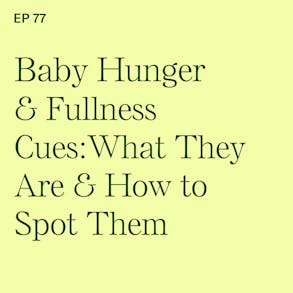
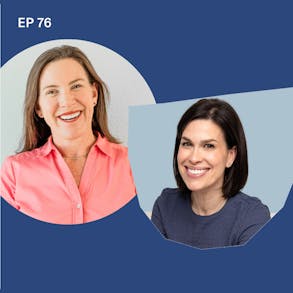
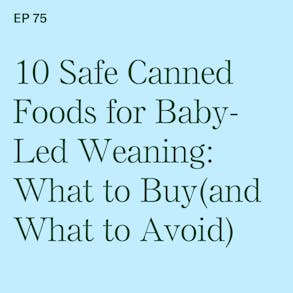
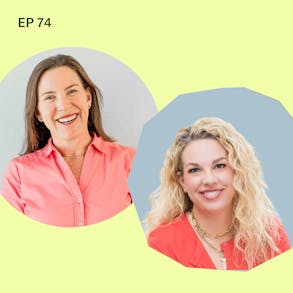
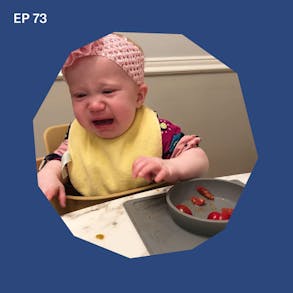
Dawn Winlelmann (1m 3s):
I always tell parents that if your baby is unable to pick up the food, then it's not baby led. So really for those early eaters, we want to have those foods being long and easy for babies to be able to pick up,
Katie Ferraro (1m 17s):
Hey, there Im Katie Ferraro, Registered Dietitian college nutrition, professor and mom of seven specializing in baby led weaning here on the baby led weaning made easy podcast. I help you strip out all of the noise and nonsense about feeding, leaving you with the competence and knowledge. You need to give your baby a safe start to solid foods using baby led weaning. Well, hello and welcome back. I am really excited to welcome back. One of my favorite guests to have on the podcast. She is a colleague and a very dear friend, Dawn Winkelman. She's a speech language pathologist, and she's here today to talk about the size of the foods that we make for baby led weaning.
Katie Ferraro (2m 1s):
Why Do Early Eaters Need Big Pieces of Food? Cause it's a little counterintuitive. Sometimes you think like, oh, I'm going to cut the food up really small and that safe for babies to eat. It's actually the opposite of true. Don's going to explain why we go with the bigger pieces early on why the small pieces are dangerous. And then when it's okay to move to the smaller pieces as your baby progresses with self feeding. And this is an important episode to listen to. I think because Don has such an incredible knack for making sometimes can seem like a complicated subject into a very, very actionable bite-size no pun intended piece of information. And when you're starting baby led weaning, you might get it, but you might have trouble explaining to other people while you're doing the big foods to grandma.
Katie Ferraro (2m 42s):
This is why we do not want to serve pea size shapes of food or to your partner, your husband, like, listen, here's how you cut the parsnip or whatever the new food that you're trying is. So with no further ado, I want to welcome Dawn. I also want just one of them mentioned, she's a feeding therapist. She is a speech language pathologist. He's on social @msdawnslp. And Dawn is also the baby led waening expert, the feeding expert for the company, easy peasy. So many of you know, and use their products. They make the original silicone suction maps for baby led weaning, but they also make utensils and cups. Dawn design, all of their baby led weaning spoons, the tiny spoon, their toddler utensils, the mini utensils. She designed their open cup and she all their products that she develops they're developmentally appropriate.
Katie Ferraro (3m 24s):
She's got a really wide array and a wide background, good expertise across the spectrum of helping to keep your baby safe. And the food size is all about safety. So with no further ado, let's welcome. Dawn Winkelmann talking about baby led, weaning food size and Why Do Early Eaters Need bigger pieces of food?
Dawn Winlelmann (3m 46s):
So great to be here. Thank you so much for having me
Katie Ferraro (3m 49s):
Today. We're going to be talking about what the shape and the size of baby Led Weaning food should look like and why, but before we dive in there, could you just tell us a little bit about yourself professionally, your background and how did you come to specialize in baby led weaning?
Dawn Winlelmann (4m 2s):
Hi everyone. I'm Dawn Winkelmann. I'm a pediatric feeding specialist and speech language pathologist. And I have over 25 years of experience teaching parents, therapists and caregivers, how to feed babies safely. I have a private practice called Ms Dawn SLP and I provide in-home feeding therapy and online coaching for parents starting a baby led weaning approach to solids. I'm also the inventor of several baby led weaning products, including the award winning tiny cup and tiny spoon for infants, as well as a mini cup and straw training system, which are available for purchase at big box stores, but also at ezpzfun.com and be sure to use Katie's code KATIE10 for 10% off all of our products.
Katie Ferraro (4m 43s):
Oh, thanks, Dawn. Talk about your products all the time on the podcast and in social media. And thank you so much for just really making zepz, a company that only offers developmentally appropriate feeding gear. Cause it's amazing how many companies don't.
Dawn Winlelmann (4m 56s):
Yes, thank
Katie Ferraro (4m 57s):
You. All right. When it comes to the shape and size of baby Led Weaning foods, a lot of times parents, like I know myself when I was new to baby led weaning, I was like, this doesn't make sense. Like I feel like if I cut the pieces up really small, it'll be safer. And you're going to explain in a second why that's not, but we actually want to cut the larger pieces of food and that's safer for earlier eaters. So could you explain the benefits of offering that larger stick and spear shaped foods early on in baby led weaning?
Dawn Winlelmann (5m 24s):
Yeah, it's really important that the shape of the food is geared towards establishing feeding skills. So basically a stick shape of food can easily fit onto your baby's gum line and then they should be able to hold that piece of food and munch chew successfully on that because it is a narrower piece of food and long piece of food that can actually go onto that Ridge of the gum line, which is so important. So then a month chew is when a baby can actually chew that food without having to have teeth. So as long as that food is long stick shape, and that can easily go onto the gum line, then they can safely chew that food without any teeth.
Dawn Winlelmann (6m 4s):
Now, remember the sticker spear is the length and width of your pinky finger,
Katie Ferraro (6m 10s):
Your adult pinky finger, not the babies
Dawn Winlelmann (6m 13s):
Pinky finger. I always see on social media that it's the right length of an adult pinky finger, but it's not the thickness. So they there's these huge thick pieces that actually will go onto the baby's gum line and onto their tongue too. And actually that's going to increase the risks of gagging, increase the risk of choking because the baby can't move their tongue effectively in order to be able to learn how to chew and protect their airway. So it's really important to make sure that the piece of food or the stick of food is the land and thickness of an adult pinky finger.
Katie Ferraro (6m 48s):
And I know we all have different fingers, sizes, but like you guys get the gist, right? It's not little tiny pieces. And Don, could you explain a little bit about the picking up the longer pieces of food? How does the longer piece earlier on in baby led weaning at six or seven months? How does that match with the baby's developmental ability?
Dawn Winlelmann (7m 4s):
Yeah. I always tell parents that if your baby is unable to pick up the food, then it's not baby led. So really for those early eaters, we want to have those foods being long and easy for babies to be able to pick up. And we have to cut up foods appropriately for early eaters. For example, if babies are six to nine months of age, they haven't developed their pincer grip yet, which is basically the thumb and index finger and using those tips and most babies don't even develop that skill until 10 months of age. So we have to serve these foods and strips or spirits so that babies can grasp them with their whole hand, be able to hold onto them, put it onto the gum line and safely and independently eat those foods,
Katie Ferraro (7m 46s):
New parents and caregivers. A lot of times they're inclined. And I know I felt this myself, like I just want to cut the foods up really small because that feels safer. But then when you learn about the mechanics of baby led weaning and how it's supposed to happen, it's actually not safer. So could you explain why we do not serve small pieces of food to early eaters?
Dawn Winlelmann (8m 5s):
Yeah, so we don't want to introduce small size foods to babies until actually we've provided them with simple starter foods like avocado banana sweet potato that are in strips. And after they've had a variety of tastes and textures and temperatures, and then we can start to advance the way that we cut those foods to make it smaller and smaller, to actually meet those skills, those feeding skills, those oral motor skills, those sensory skills and those abilities. The way that we cut foods have to match a baby's abilities to be able to eat safely. That's what this whole baby led weaning experience is, is following baby's lead and allowing them to be able to use their developmental skills, to meet the feeding requirements that they need to have.
Dawn Winlelmann (8m 56s):
And especially because these things are also happening simultaneously, as we're increasing from one meal a day to two meals a day to three meals a day, they're getting more and more practice and they need to be able to have a lot of opportunities with longer spear shaped foods. First, before we start cutting them into smaller bits and really having them focus so much on how to be able to get those small pieces of food into their mouth.
Katie Ferraro (9m 20s):
Now, what about the parents that always say, you know, we, co-teach a number of programs together and inevitably like I can predict what's like some of the questions are going to be, and by baby picks up the sticker, the spear of the food Dawn and Katie, and then they break it off or they mash it off and it's no longer a sticker spear, what do I do? Should I like rip it out of their hands? What do we do if the baby breaks the stick or the sphere down to a smaller size on their own?
Dawn Winlelmann (9m 41s):
Can I tell parents not to worry because as their baby is bringing that spirit to their mouth, they are getting so much sensory input from their fingers and their risks and their hands and their arm and baby's prepared from a sensory standpoint for that food to actually be matched into their mouth. So if it breaks part in their mouth, it's okay because they are the one actually doing it as compared to us putting a piece of food into baby's mouth. Baby has no sensory or motor awareness of that food. And so that can be really dangerous. So since it was in whole form, baby was able to grasp it and be able to prepare their brain for that sensory and motor messages for a safe swallow. And as compared to babies, being provided with a small piece of food that they can't pick up and they can't grasp and they can't put into their mouth easily.
Dawn Winlelmann (10m 26s):
And then that baby is not able to prepare a nice, safe swallow. Now, if baby is independently feeding themselves that strip of food or an a chunk falls out of their mouth, then parents can easily take that piece of food and squish it onto the tiny spoon. There's sensory bumps here on the spoon bowl, and they can squish that chunk of food and then provide that and reintroduce that food onto the tiny spoon as a pre-loaded spoon. So now baby can easily put that food into their mouth if it breaks apart, it's okay. They have that sensory input. If parents also take those pieces of food, put it onto the spoon and preload the spoon. That's a safe way to be able to reintroduce that as
Katie Ferraro (11m 5s):
Well. And guys, if you have babies that are over stuffers, the ones that put too much food in their mouth, I want to send you to an episode that Dawn and I did together in interview called over stuffing. What if my baby takes big bites with Dawn Winkelmann and that's episode number 54, cause she's got some good tips for you. If your baby is putting too many of these foods in their mouth at one time, Dawn, tell us, when is it safe to start offering smaller sized pieces of foods to baby? So
Dawn Winlelmann (11m 33s):
It's safer when a baby is older. So what we really want to do is we want to be able to provide Baby with that really good foundation at first of having, you know, those strips of foods and being able to offer those in different textures. So maybe we're offering those strips or foods and we're dipping some into a puree, or we're also taking those strips of foods. And we're also feeding the baby from a cup. So we're being able to provide open cup drinking, using a spoon, using strips of food. We're basically starting this whole basis and foundation of different textures and different ways that babies can use their hands in order to be able to self feed.
Dawn Winlelmann (12m 13s):
So using their hand to pick up that spoon, using their hand, to pick up that food, using their hand, to pick up that cup, and then we can move on to smaller pieces of food because now at the six month mark, seven month mark, eight month mark going into that nine month mark, Bebe's had all of this practice. They are being able to advance their motor skills so that they can actually move on to smaller pieces of food and be more prepared for them, for our safe swallow as well.
Katie Ferraro (12m 40s):
We've got it down that we do the larger size stick or Spears about the size of an adult pinky finger early on in baby led weaning. And then once you've moved down the road and your baby's developmentally capable of picking up and eating the smaller sized pieces and you feel comfortable doing it, go ahead and move to that. But Dawn, so many of our parents get stuck on those simple starter fruits. I know you and I in both of our lines of business and the programs we teach together. We see parents who like get out of the gate real good with baby led weaning, right? They're doing avocado and banana and sweet potato. And then we check back weeks and months later, and they're still stuck on those foods. So we're going to be, co-teaching a workshop together to help these parents who are stuck. I was wondering if maybe you could share what it's about since our audience is probably tired of hearing from me.
Katie Ferraro (13m 23s):
And they'd love to hear it from you
Dawn Winlelmann (13m 25s):
Workshop that kid he's talking about is a free workshop called with why feed my baby after avocado banana and sweet potato. This is a high energy event packed with tons of feeding tips on what to feed your baby and how to feed your baby in order to have feeding success in order to build your confidence in order to help your baby achieve their feeding and swallowing milestones. And this is a perfect topic of baby Led Weaning food size, because that is what we really hone in on. We're really talking about what the food size is, what the food is, what the food size is and how to be able to really help your baby from a nutrition standpoint, which is Katie's point of view as well as a swallowing standpoint, which is my point of view, and really feel like you are mastering this amazing skill that your baby's going to be able to do three times a day for the rest of their life.
Katie Ferraro (14m 21s):
Dawn, this is one of my favorite workshops to teach with you because I guess it is super high energy. I think no one would argue that you and I are not excited about feeding babies, but it's so great to be able to help parents get unstuck and pass those simple starter foods. So you can start pushing your baby's palette with some of those trickier textures. And for those of you guys who want to sign up for this workshop again, it's called, what do I feed my baby after avocado banana and sweet potato. If you head to babyledweaningworkshop.com, that's where you go to sign up. And everybody on this free workshop gets a copy of one of our most requested infant feeding guides. It's the sample eating and drinking schedules for six, nine and 12 months of age. So not only will, you know what to feed your baby, but we're going to talk about how often and how much to feed them.
Katie Ferraro (15m 5s):
And you're getting that info from the leading speech language pathologist and the leading Registered Dietitian in the field of baby Led Weaning. So it's like a win, win, win, win situation at Dawn. And I hope you will join us again. The URL is baby led, weaning workshop.com. All right, Dawn, thank you so much for joining us today. I'm super excited to do this workshop with you. I appreciate all of your insight on how to make food safe. Cause that's our focus, right? It's always on safety for the families, for babies when they're starting baby led weaning,
Dawn Winlelmann (15m 31s):
Absolutely safety is key to be able to find enjoyment and families are always saying that mealtime is a battle, right? And so I love that you and I have that same approach of let's make it safe. And as long as it's safe, it's going to be developmentally appropriate. As long as it's developmentally appropriate, it's going to have an a joyful mealtime.
Katie Ferraro (15m 50s):
Well, I hope you guys enjoyed that interview with Msdawnslp. She's a feeding therapist, baby led weaning expert. I love the way she describes how we cut the foods, right? We've gotta be aware and cognizant of our baby's gum line and where the food's lying in relation to their tongue. And then also, you know, their physiological capabilities. You can't even pick up a small piece of food early on in baby led weaning. If you don't have your pincer grasp. So thank you so much again, Dawn. And as I mentioned at the top of that episode, we are good friends in real life. She's one of my favorite people to work with and hang out with. And I'm so excited because we're going to be doing that series of live baby led weaning workshops coming up really soon. The enrollment is open for our workshop, which is called, what do I feed my baby after avocado banana and sweet potato that's at babyledweaningworkshop.com.
Katie Ferraro (16m 36s):
Everyone on that workshop gets that most requested infant feeding guide that we co-wrote together called sample eating and drinking schedules for six, nine, and 12 months. Come and check out the workshop. It's free, high energy, lots of great info for helping you move past those simple starter foods, because we don't want to see your baby sticking around with the simple starter foods as they need to be progressing towards more complex foods. Don and I are going to help you get unstuck if you're stuck on the starter foods, or if you just want to learn how to get your baby past those first few kind of crucial weeks of baby Led Weaning, hope to see you there. Baby led weaning workshop.com by now.
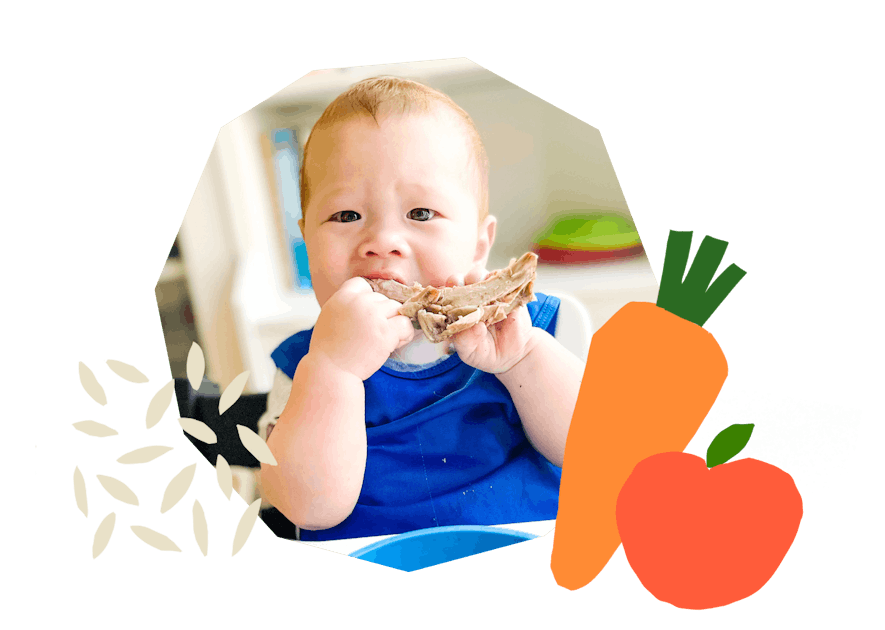
The Program Baby-Led Weaning with Katie Ferraro
A step-by-step digital program for starting solid foods safely and navigating the original 100 FIRST FOODS™ meal plan with baby-led weaning.
 EXPERT-LED, PROVEN APPROACH TO EATING REAL FOOD
EXPERT-LED, PROVEN APPROACH TO EATING REAL FOOD CONCISE VIDEO TRAININGS TO MASTER BABY-LED WEANING
CONCISE VIDEO TRAININGS TO MASTER BABY-LED WEANING 100 FIRST FOODS DAILY MEAL PLAN WITH FOOD PREP VIDEOS
100 FIRST FOODS DAILY MEAL PLAN WITH FOOD PREP VIDEOS
Baby-Led Weaning for Beginners Free Workshop
Is your baby ready to start solid foods, but you’re not sure where to start? Get ready to give your baby a solid foundation to a lifetime of loving real food…even if you’re feeling overwhelmed or confused about this next stage of infant feeding.
Get baby-led weaning recipes and tips delivered to your email inbox.

